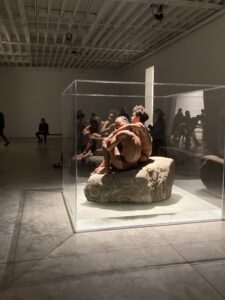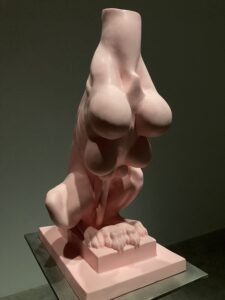
Miles Greenberg: The Embrace

The Faurschou Foundation, headed by onetime art dealer Jens Faurschou, opened its 12,000 sq ft. New York museum exhibition space in Greenpoint, Brooklyn, New York in 2019 in a redesigned former shoe factory, continuing in the tradition of its museums in Copenhagen and Beijing of showing the work of contemporary artists and foster cross-cultural exchange, especially between the global east and west. Having shown since 2019 artists including Al Wei Wei, Cai Guo-Qiang, Tracey Emin, Anselm Kiefer, Ragnar Kjartansson, Liu Wei, Paul McCartney, Shirin Neshat, Gabriel Orozco, Robert Rauchenberg, Bill Viola, Dan Ho and more, the present show features work by Louise Bourgeois, Yoko Ono and Miles Greenberg does not shy away from politics. Continuing comment on the human condition following the first December 2019 show, “The Red Barn Grows in the South” which included themes of violence, war, olitivs, idealism, escapism, desire, hopes and memory, (from the catalogue essay) this show speaks to the condition of the world and its people.

“One day let’s be a pair of trees


